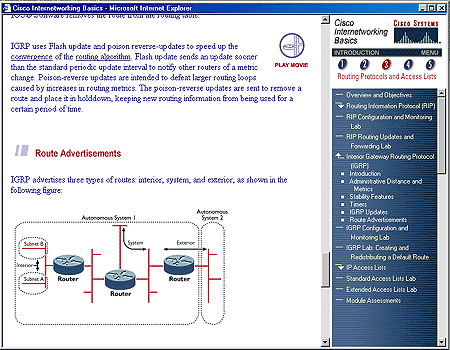Cisco's Internetworking Basics
 When was the last time you thought; "Interior Gateway Routing Protocol (IGRP)
is a good routing protocol that provides a robust protocol for routing within an
autonomous system having an arbitrarily complex topology, and consisting of
media with diverse bandwidth and delay characteristics. But is this really what
we need to use?"
When was the last time you thought; "Interior Gateway Routing Protocol (IGRP)
is a good routing protocol that provides a robust protocol for routing within an
autonomous system having an arbitrarily complex topology, and consisting of
media with diverse bandwidth and delay characteristics. But is this really what
we need to use?"
I know these kinds of questions plague us everyday here so we were thankfully
able to pop in a copy of Cisco's Internetworking Basics and teach ourselves the
skinny on IGRP. Informed decisions are the lifeblood of networks that actually
work as we all know.
While the abundance of self promotion in the Cisco Interactive Mentor CD-ROM
gets stale very quickly, the underlying information is absolutely helpful for new
or novice users finding themselves interacting more and more with hard core
networking guys and gals.
The Details
The Interactive Mentor is an HTML based tutorial separated into five sections
that is full of explanations, graphs, and little movie clips that walk you
through labs and exercises as you learn. Internetworking Basics deals with five
main topics; Introduction to Cisco Networking, Routed Protocols, Routing
Protocols and Access Lists, LAN Switching, and finally Wide Area Network
Access.

The
program proved itself valuable for learning the utter basics of
internetworking and is designed essentially for CCNA certification. This
materials cover IOS command line interface, TCP/IP and Cisco routing concepts,
routing protocols, access lists, LAN switching, and Wide Area Network access. As
we mentioned each area is delt with in one of five modules that contain several
interactive features - so you don't find yourself just mindlessly reading page
after page of text and technical specifications. The modules contain interactive
tutorials that put you in the role of a network administrator. The software
allows you to interact with the interface for all configuration and
challenge labs. In this way, users can configuring virtual network devices
and make the mistakes that would otherwise bring down networks.
All in all a very useful tool for the road to
advanced networking concepts, knowledge and applications. While this material
assumes almost know previous knowledge, it is rather easy to move forward with
it onto more advanced topics.

